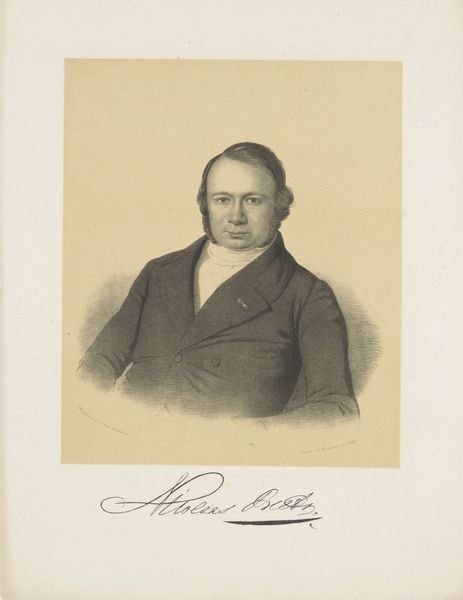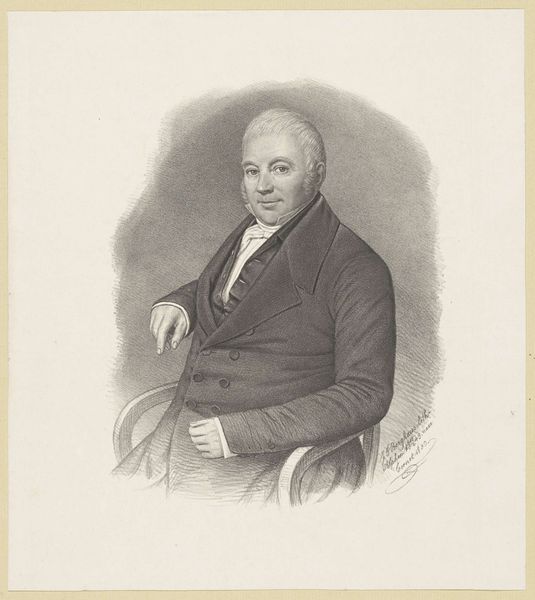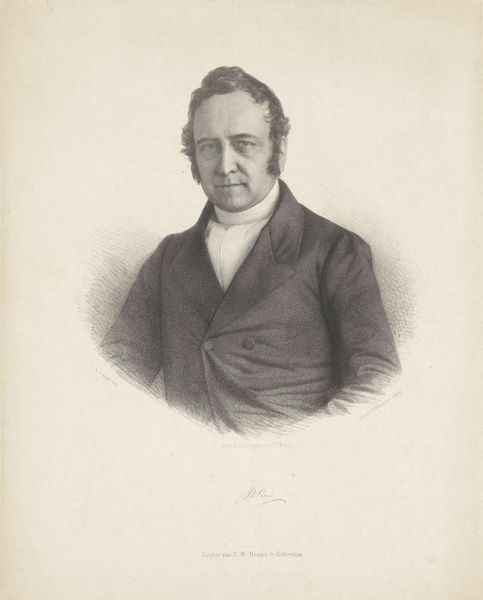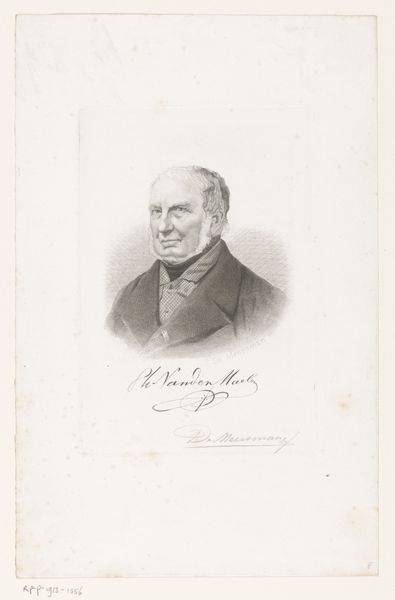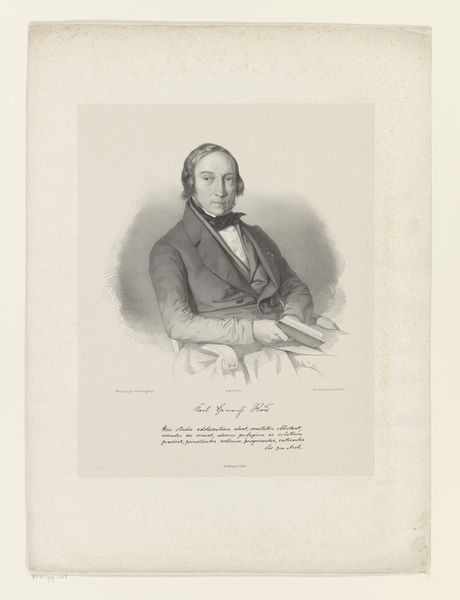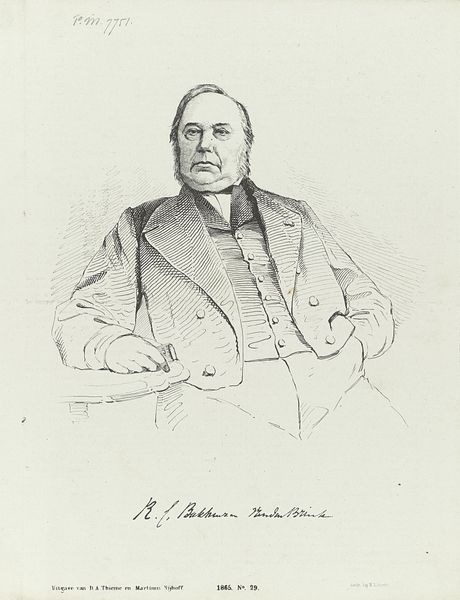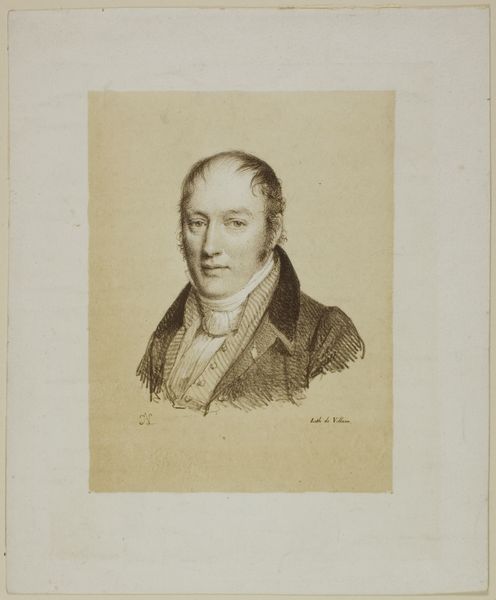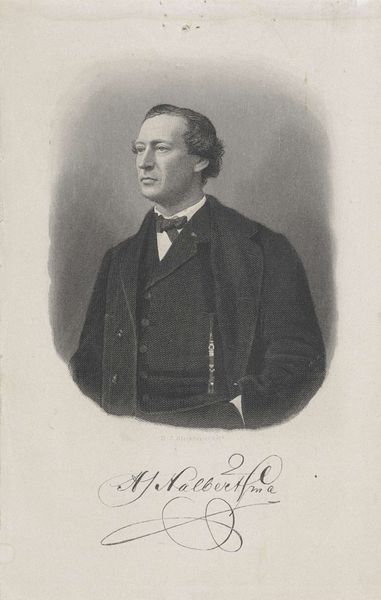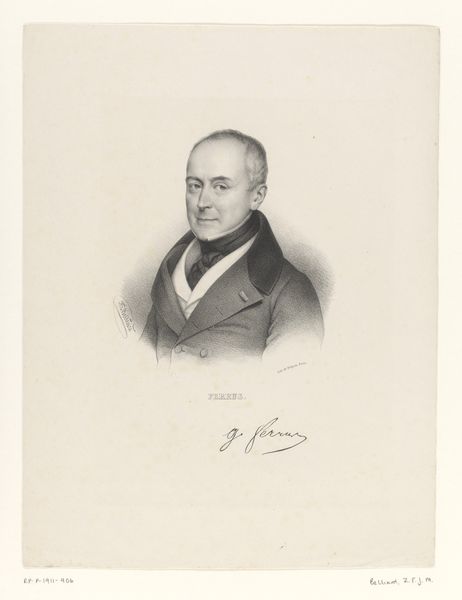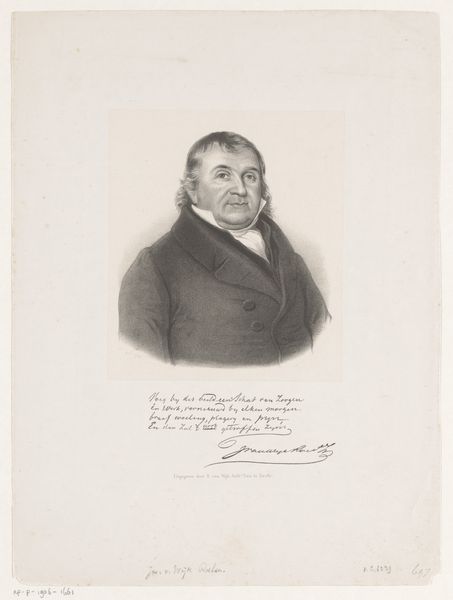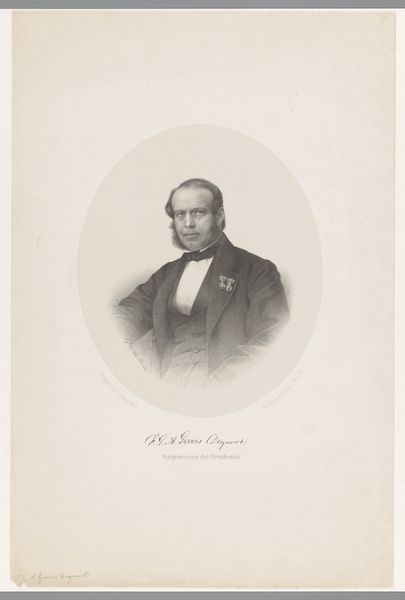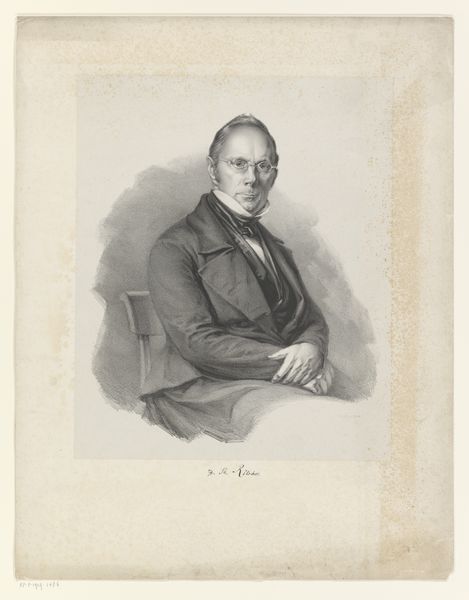
drawing, etching, graphite
#
portrait
#
pencil drawn
#
drawing
#
etching
#
pencil drawing
#
graphite
#
portrait drawing
#
academic-art
#
realism
Dimensions: height 177 mm, width 115 mm
Copyright: Rijks Museum: Open Domain
Curator: Looking at this portrait, I immediately sense a profound pensiveness. There's a weighty introspection conveyed, don't you think? Editor: Indeed. This is "Portret van Nicolaas Beets," made between 1850 and 1886. Dirk Jurriaan Sluyter rendered it, employing graphite and etching. It is currently housed at the Rijksmuseum. What resonates is how this image circulates power, not simply an image of the man, but the status conferred on intellectuals in Dutch society at the time. Curator: Power is a key element here. It's not just an individual portrait; it represents the social and cultural power vested in figures like Nicolaas Beets. You feel the intersectionality of class, status and identity coming into play. Editor: Precisely. Consider how institutions validated and cemented these notions of leadership, culturally and politically. The museums acquire it. Publishers create images. Etchings were a mass media and this image circulated widely to show what an ideal of leadership looks like. The image doesn’t just *show* Beet’s status, it *creates* his status. Curator: How can we apply that context? To what extent was he actively complicit? Was he benefitting from historical power structures to ensure the power dynamics remained intact? Editor: Sluyter creates a very controlled composition. Nicolaas Beet’s gaze is direct, his arms crossed...He takes up a lot of space on the image. The detailing, particularly the light and shadow around his face, further accentuates this serious mood. It’s a portrait that makes sure the audience recognizes his seriousness of mind. Curator: The pose and the meticulous technique are interesting. It’s about controlling public perception, something very relevant still today, when representation shapes our understanding. Who decides what's portrayed and who does the portraying and the consequences of it? Editor: Well, that's the beauty and challenge in analyzing these historical images. It prompts these difficult yet crucial questions about visibility, about cultural authority, and the ever-shifting dynamics between artist, subject, and society. Curator: It underlines how much a portrait encapsulates history, not merely the individual, but also societal frameworks that constructed identity. Editor: Exactly. These aren’t just images from a long time ago. Images like these tell a wider and far reaching narrative of how a social construct of an individual becomes reality.
Comments
No comments
Be the first to comment and join the conversation on the ultimate creative platform.
